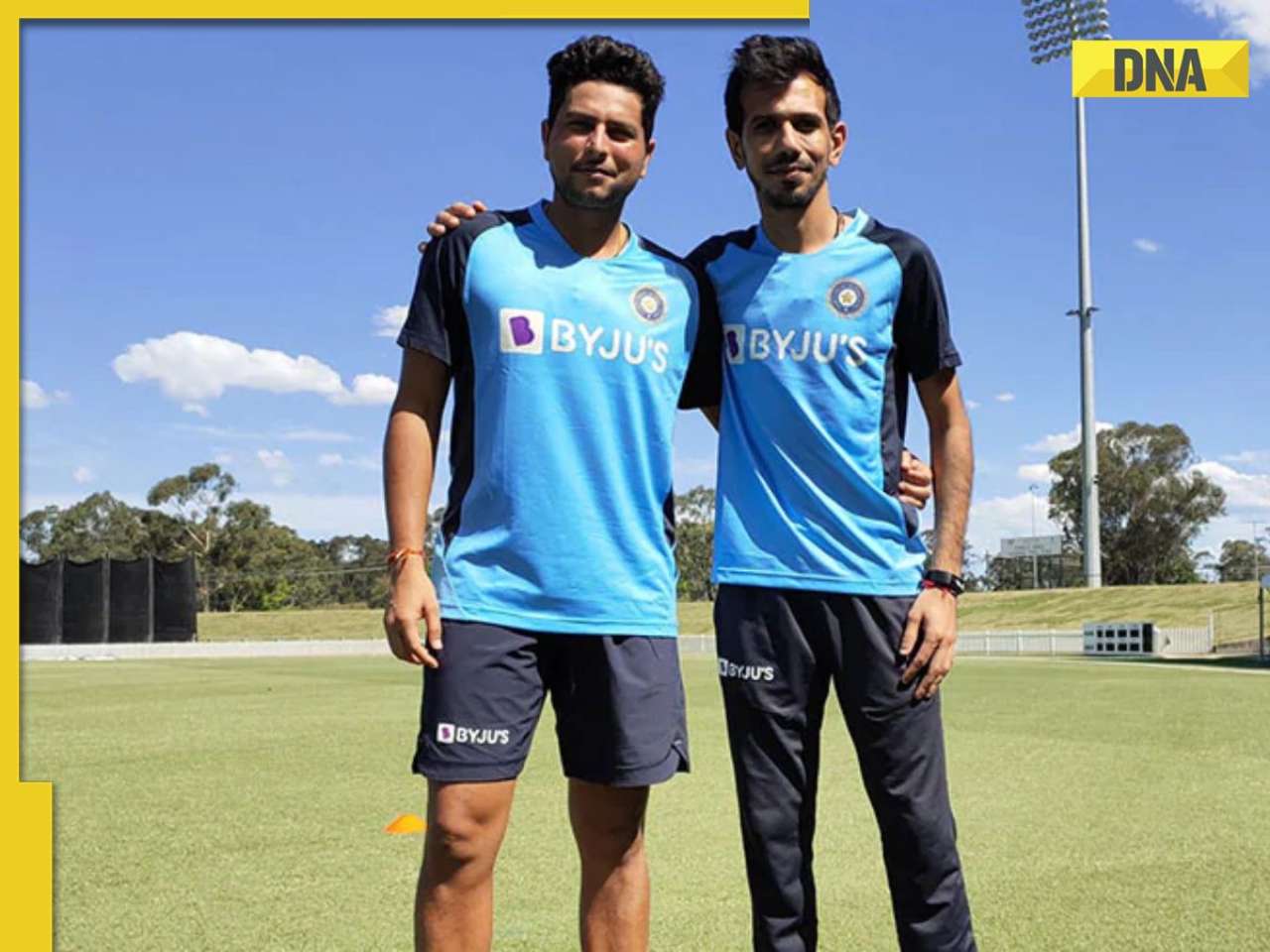A school in Bandra will have classrooms where students of different age groups will study together in the same class, under one teacher. It is based on the lines of schools in North America.
Now your six-year-old can study alongside a 10-year-old. Certain international schools are springing up in the city with new concepts of learning, such as multi-age classrooms.
A school in Bandra will have classrooms where students of different age groups will study together in the same class, under one teacher. It is based on the lines of schools in North America.
The seniors will help the younger students. The younger students, meanwhile, will be exposed to the higher-level lessons.
The school claims that such classrooms will increase cooperation, peer tutoring and nurturing behaviour among children, while preparing them for the ‘real world’.
“Despite evidence from developmental psychology that children grow and develop at different and variable rates, we keep age-grading as a key structural element of schooling. It rewards those who develop faster and punishes those who are slower or different, even though they may have great abilities and gifts,” said Asha Narayanan, principal St Mary’s High School, Navi Mumbai, who has similar projects in the pipeline.
However, parents and educationists in the city say that such classrooms are a recipe for disaster where education might get lost in the confusion.
Ritu Sawhney, parent of three children who came through multi-aged elementary school classrooms, and teacher who has taught in both types of settings, says that the quality of multi-age program-mes depends strongly on the teacher and his or her specific strengths and weaknesses.
She said the disadvantages were the problem of keeping the ‘other grade’ busy and engaged while trying to teach when the class was divided.
Meera Isaacs, principal of Cathedral and John Connon School, Fort, said, “It will create disparity as a teenager will deal with situations differently than a six-year-old,” she said. “We should not adopt American concepts of learning without understanding whether it will suit the Indian child.”
![submenu-img]() Three Indian nationals accused of killing Hardeep Singh Nijjar appear in Canadian court amid diplomatic crisis
Three Indian nationals accused of killing Hardeep Singh Nijjar appear in Canadian court amid diplomatic crisis![submenu-img]() Apple iPad Pro with M4 chip and AI capabilities launched in India, price starts at Rs 99900
Apple iPad Pro with M4 chip and AI capabilities launched in India, price starts at Rs 99900![submenu-img]() DNA Exclusive: Inside scoop of Congress' plan to defeat Smriti Irani, retain Amethi
DNA Exclusive: Inside scoop of Congress' plan to defeat Smriti Irani, retain Amethi![submenu-img]() This superstar was in love with Muslim actress, was about to marry her, relationship ruined after death threats from..
This superstar was in love with Muslim actress, was about to marry her, relationship ruined after death threats from..![submenu-img]() Covishield maker AstraZeneca to withdraw its COVID-19 vaccine globally due to...
Covishield maker AstraZeneca to withdraw its COVID-19 vaccine globally due to...![submenu-img]() DNA Verified: Is CAA an anti-Muslim law? Centre terms news report as 'misleading'
DNA Verified: Is CAA an anti-Muslim law? Centre terms news report as 'misleading'![submenu-img]() DNA Verified: Lok Sabha Elections 2024 to be held on April 19? Know truth behind viral message
DNA Verified: Lok Sabha Elections 2024 to be held on April 19? Know truth behind viral message![submenu-img]() DNA Verified: Modi govt giving students free laptops under 'One Student One Laptop' scheme? Know truth here
DNA Verified: Modi govt giving students free laptops under 'One Student One Laptop' scheme? Know truth here![submenu-img]() DNA Verified: Shah Rukh Khan denies reports of his role in release of India's naval officers from Qatar
DNA Verified: Shah Rukh Khan denies reports of his role in release of India's naval officers from Qatar![submenu-img]() DNA Verified: Is govt providing Rs 1.6 lakh benefit to girls under PM Ladli Laxmi Yojana? Know truth
DNA Verified: Is govt providing Rs 1.6 lakh benefit to girls under PM Ladli Laxmi Yojana? Know truth![submenu-img]() Alia Bhatt wears elegant saree made by 163 people over 1965 hours to Met Gala 2024, fans call her ‘princess Jasmine’
Alia Bhatt wears elegant saree made by 163 people over 1965 hours to Met Gala 2024, fans call her ‘princess Jasmine’![submenu-img]() Jr NTR-Lakshmi Pranathi's 13th wedding anniversary: Here's how strangers became soulmates
Jr NTR-Lakshmi Pranathi's 13th wedding anniversary: Here's how strangers became soulmates![submenu-img]() Streaming This Week: Heeramandi, Shaitaan, Manjummel Boys, latest OTT releases to binge-watch
Streaming This Week: Heeramandi, Shaitaan, Manjummel Boys, latest OTT releases to binge-watch![submenu-img]() Remember Ayesha Kapur? Michelle from Black, here's how actress, nutrition coach, entrepreneur looks after 19 years
Remember Ayesha Kapur? Michelle from Black, here's how actress, nutrition coach, entrepreneur looks after 19 years![submenu-img]() Remember Heyy Babyy's cute 'Angel' Juanna Sanghvi? 20 year-old looks unrecognisable now, fans say 'her comeback will...'
Remember Heyy Babyy's cute 'Angel' Juanna Sanghvi? 20 year-old looks unrecognisable now, fans say 'her comeback will...'![submenu-img]() Haryana Political Crisis: Will 3 independent MLAs support withdrawal impact the present Nayab Saini led-BJP government?
Haryana Political Crisis: Will 3 independent MLAs support withdrawal impact the present Nayab Saini led-BJP government?![submenu-img]() DNA Explainer: Why Harvey Weinstein's rape conviction was overturned, will beleaguered Hollywood mogul get out of jail?
DNA Explainer: Why Harvey Weinstein's rape conviction was overturned, will beleaguered Hollywood mogul get out of jail?![submenu-img]() What is inheritance tax?
What is inheritance tax?![submenu-img]() DNA Explainer: What is cloud seeding which is blamed for wreaking havoc in Dubai?
DNA Explainer: What is cloud seeding which is blamed for wreaking havoc in Dubai?![submenu-img]() DNA Explainer: What is Israel's Arrow-3 defence system used to intercept Iran's missile attack?
DNA Explainer: What is Israel's Arrow-3 defence system used to intercept Iran's missile attack?![submenu-img]() This superstar was in love with Muslim actress, was about to marry her, relationship ruined after death threats from..
This superstar was in love with Muslim actress, was about to marry her, relationship ruined after death threats from..![submenu-img]() Meet Madhuri Dixit’s lookalike, who worked with Akshay Kumar, Govinda, quit films at peak of career, is married to…
Meet Madhuri Dixit’s lookalike, who worked with Akshay Kumar, Govinda, quit films at peak of career, is married to… ![submenu-img]() Meet former beauty queen who competed with Aishwarya, made debut with a superstar, quit acting to become monk, is now..
Meet former beauty queen who competed with Aishwarya, made debut with a superstar, quit acting to become monk, is now..![submenu-img]() Imtiaz Ali reveals if Shahid Kapoor, Kareena Kapoor Khan's breakup affected Jab We Met: 'They were...'
Imtiaz Ali reveals if Shahid Kapoor, Kareena Kapoor Khan's breakup affected Jab We Met: 'They were...'![submenu-img]() Meet actor, who was once thrown out of set, beat up cops, then became popular villain; starred in Rs 1000-crore film
Meet actor, who was once thrown out of set, beat up cops, then became popular villain; starred in Rs 1000-crore film![submenu-img]() IPL 2024: Jake Fraser-McGurk, Abishek Porel power DC to 20-run win over RR
IPL 2024: Jake Fraser-McGurk, Abishek Porel power DC to 20-run win over RR![submenu-img]() SRH vs LSG, IPL 2024: Predicted playing XI, live streaming details, weather and pitch report
SRH vs LSG, IPL 2024: Predicted playing XI, live streaming details, weather and pitch report![submenu-img]() IPL 2024: Here’s why CSK star MS Dhoni batted at No.9 against PBKS
IPL 2024: Here’s why CSK star MS Dhoni batted at No.9 against PBKS![submenu-img]() SRH vs LSG IPL 2024 Dream11 prediction: Fantasy cricket tips for Sunrisers Hyderabad vs Lucknow Super Giants
SRH vs LSG IPL 2024 Dream11 prediction: Fantasy cricket tips for Sunrisers Hyderabad vs Lucknow Super Giants![submenu-img]() Watch: Kuldeep Yadav, Yuzvendra Chahal team up for hilarious RR meme, video goes viral
Watch: Kuldeep Yadav, Yuzvendra Chahal team up for hilarious RR meme, video goes viral![submenu-img]() Not Alia Bhatt or Isha Ambani but this Indian CEO made heads turn at Met Gala 2024, she is from...
Not Alia Bhatt or Isha Ambani but this Indian CEO made heads turn at Met Gala 2024, she is from...![submenu-img]() Man makes Lord Hanuman co-litigant in plea, Delhi High Court asks him to pay Rs 100000…
Man makes Lord Hanuman co-litigant in plea, Delhi High Court asks him to pay Rs 100000…![submenu-img]() Four big dangerous asteroids coming toward Earth, but the good news is…
Four big dangerous asteroids coming toward Earth, but the good news is…![submenu-img]() Isha Ambani's Met Gala 2024 saree gown was created in over 10,000 hours, see pics
Isha Ambani's Met Gala 2024 saree gown was created in over 10,000 hours, see pics![submenu-img]() Indian-origin man says Apple CEO Tim Cook pushed him...
Indian-origin man says Apple CEO Tim Cook pushed him...




















































)
)
)
)
)
)